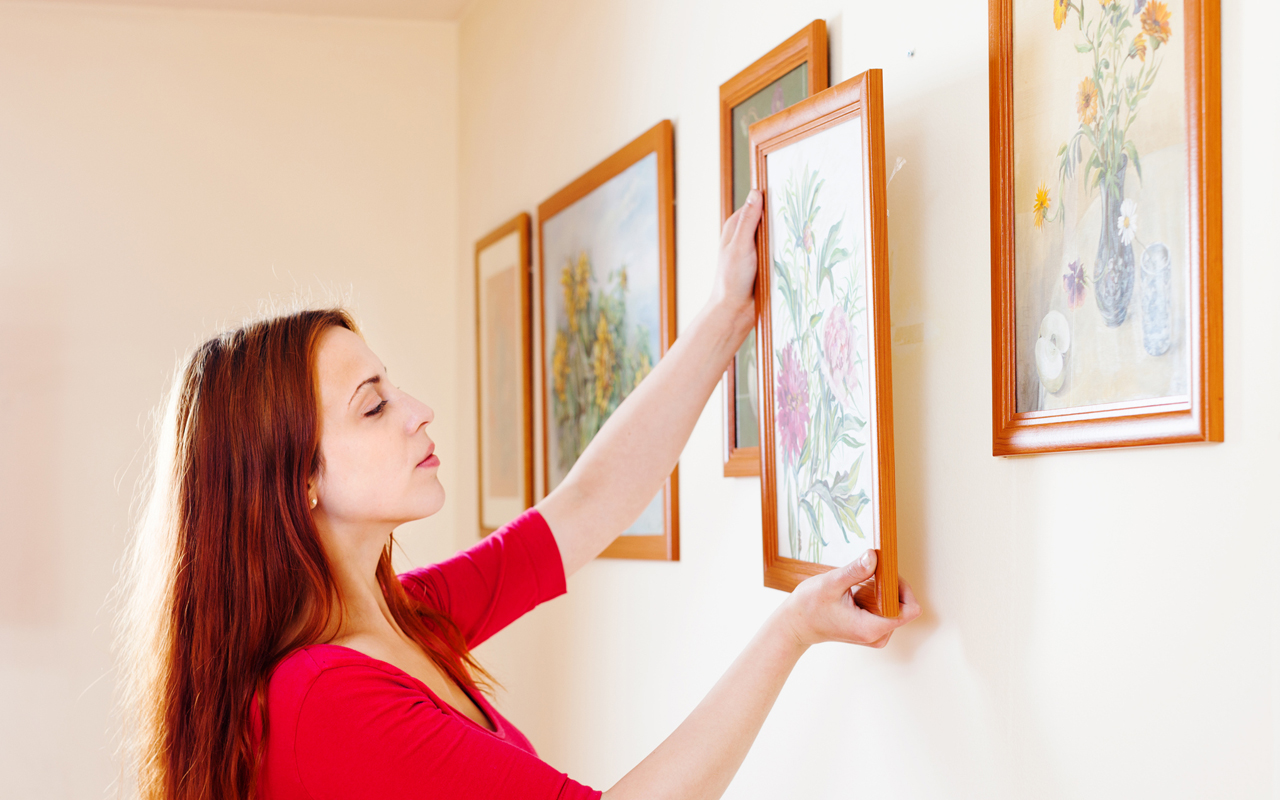Art ‘Investors’: Are You Collecting Art or Merely Decorating?
There’s a difference between the two. Before you buy or sell a piece of art, consider some guidelines on authentication and what might make one piece of art valuable, and another merely a nice complement to your sofa.


My wife, Trish, creates fiber art. She has designed and created hooked rugs, furnishings and wall hangings using materials from wool suits, prom dresses, seashells, utensils and spools.
Her kind of repurposing has long been central to artistic expression. From “objet trouvé” (found art) pieces to Robert Rauschenberg’s Bed (1955) and Andy Warhol’s Coca-Cola (3) (1962), artworks long cherished by collectors have incorporated the ordinary in extraordinary ways.
In fact, art has always defied definition. Every human creation has value to someone, ranging from traditional mediums like ceramics, sculptures and paintings to furniture, jewelry or antique autos. Many attributes can elevate a crafted item you find aesthetically pleasing to great art, but usually, influential art has cultural, historic, sentimental, creative, spiritual and/or derivative value.

Sign up for Kiplinger’s Free E-Newsletters
Profit and prosper with the best of expert advice on investing, taxes, retirement, personal finance and more - straight to your e-mail.
Profit and prosper with the best of expert advice - straight to your e-mail.
In addition, it can have great financial value.
Most of us start collecting pieces purchased at art fairs to decorate our homes. Still, we question whether the artists whose work we’re supporting will grow significant and our purchases truly valuable. The current popularity of an artist does not necessarily equate to historical significance, and artists who today are considered wildly influential often toiled in anonymity for long periods of time. Vincent Van Gogh, an incredibly prolific painter who finished about 900 works over a decade, allegedly sold only a single painting before his death. The best advice I’ve heard for collecting came from a sommelier friend: “To truly appreciate wine requires a corkscrew.”
What do you need to know before you buy?
First, some legal considerations. When you purchase artwork from an artist, be aware that the artist retains a legal property-type interest in the proper attribution and integrity of the artwork. The artist has the right to be identified as the creator of the work, and a renowned artist has the right to prevent intentional distortion, modification and destruction of recognized artworks. Also, the creators, or their descendants, often retain all rights to reproduction and copyright, unless you negotiate for those rights when you buy.
When you buy from another collector or a dealer, you naturally assume that you are the true owner. That’s not always true. The proper owner has “title” to the artwork. A work’s provenance includes its custody, transfer and ownership history. You can delay final purchase until an independent expert researches the work’s provenance. You should seek a complete record of all the known transferors and transferees in much the same way as transfers of land are recorded. Your “title” to any artwork you buy is only effective if the provenance of the artwork is clear and every past transfer was a bona fide transaction by a seller with a clear title. Even a Certificate of Authenticity does not necessarily provide you with a right to damages if a work of art is later discovered to be inauthentic.
The true owner of a lost/stolen artwork may have superior title to even a good-faith purchaser, regardless of how much time has passed. Your only recourse to recover damages for a purchase of stolen art may be against the dealer/seller. If you have recorded the artwork’s provenance and bibliography, and it supports a public chain of title, then the true owner’s claim may be weakened. This is not an issue when you purchase from the artist directly.
How can you enhance and protect an artwork’s value?
- Document the artist’s credentials, training, notable exhibits and influential sales.
- Record the artwork’s general description, its title, origination date, dimensions, materials used, condition, distinguishing features, inscriptions and markings, purchase price, documented value/appraisal, and obtain any certification of authenticity.
- Create or obtain a bibliography: a compilation of citations and mentions in print and social media. A large and thorough bibliography for the artist, your purchase and any related pieces, will help document the artist’s cultural influence.
Most homes aren’t suitable to store artwork that incorporates pigments, resins, oils, plant and nut extracts, fiber, paper, wood and plastics that decay or decompose naturally over time. These elements may deteriorate faster in sun or artificial light, at room temperature, under normal humidity, and from common household dust, mites and other contaminants. Investigate how to protect your art by interviewing the artist and doing some research. Strongly consider whether you can afford the expense of housing, insuring and protecting an expensive art find before you buy.
Finally, be a trendsetter. The artwork that challenges you, is provocative, inspires an emotional response or incorporates the highest form and talent in its expression has the greatest likelihood of weathering the cruel transience of human desire. Consider Marcel Duchamp’s Fountain (1917). Even bad taste is superior to no taste at all.
Get Kiplinger Today newsletter — free
Profit and prosper with the best of Kiplinger's advice on investing, taxes, retirement, personal finance and much more. Delivered daily. Enter your email in the box and click Sign Me Up.

Timothy Barrett is a Senior Vice President and Trust Counsel with Argent Trust Company. Timothy is a graduate of the Louis D. Brandeis School of Law, past Officer of the Metro Louisville Estate Planning Council and the Estate Planning Council of Southern Indiana, Member of the Louisville, Kentucky, and Indiana Bar Associations, and the University of Kentucky Estate Planning Institute Committee.
-
 6 Stunning Waterfront Homes for Sale Around the US
6 Stunning Waterfront Homes for Sale Around the USFrom private peninsulas to lakes, bayous and beyond, Kiplinger's "Listed" series brings you another selection of dream homes for sale on the waterfront.
By Charlotte Gorbold Published
-
 Six Reasons to Disinherit Someone and How to Do It
Six Reasons to Disinherit Someone and How to Do ItWhether you're navigating a second marriage, dealing with an estranged relative or leaving your assets to charity, there are reasons to disinherit someone. Here's how.
By Donna LeValley Published
-
 Should You Still Wait Until 70 to Claim Social Security?
Should You Still Wait Until 70 to Claim Social Security?Delaying Social Security until age 70 will increase your benefits. But with shortages ahead, and talk of cuts, is there a case for claiming sooner?
By Evan T. Beach, CFP®, AWMA® Published
-
 Retirement Planning for Couples: How to Plan to Be So Happy Together
Retirement Planning for Couples: How to Plan to Be So Happy TogetherPlanning for retirement as a couple is a team sport that takes open communication, thoughtful planning and a solid financial strategy.
By Andrew Rosen, CFP®, CEP Published
-
 Market Turmoil: What History Tells Us About Current Volatility
Market Turmoil: What History Tells Us About Current VolatilityThis up-and-down uncertainty is nerve-racking, but a look back at previous downturns shows that the markets are resilient. Here's how to ride out the turmoil.
By Michael Aloi, CFP® Published
-
 Home Insurance: How to Cut Costs Without Losing Coverage
Home Insurance: How to Cut Costs Without Losing CoverageNatural disasters are causing home insurance premiums to soar, but don't risk dropping your coverage completely when there are ways to keep costs down.
By Jared Elson, Investment Adviser Published
-
 Markets Roller Coaster: Resist the Urge to Make Big Changes
Markets Roller Coaster: Resist the Urge to Make Big ChangesYou could do more harm than good if you react emotionally to volatility. Instead, consider tax-loss harvesting, Roth conversions and how to plan for next time.
By Frank J. Legan Published
-
 Why Homeowners Insurance Has Gotten So Very Expensive
Why Homeowners Insurance Has Gotten So Very ExpensiveThe home insurance industry is seeing more frequent and bigger claims because of weather, wildfires and other natural disasters.
By Karl Susman, CPCU, LUTCF, CIC, CSFP, CFS, CPIA, AAI-M, PLCS Published
-
 Going Through Probate? How to Find the Right Attorney
Going Through Probate? How to Find the Right AttorneyJust having the skills and experience to do the job isn't enough. The probate attorney you hire needs to have the right temperament for your particular case.
By John R. Silva, Esq. Published
-
 Widow's Penalty: Three Ways to Protect Your Finances
Widow's Penalty: Three Ways to Protect Your FinancesHigher Medicare premiums, smaller Social Security payments, bigger tax bills … Financial changes can hit hard when a spouse dies. How to counter the blow.
By Ashley Terrell, IAR Published